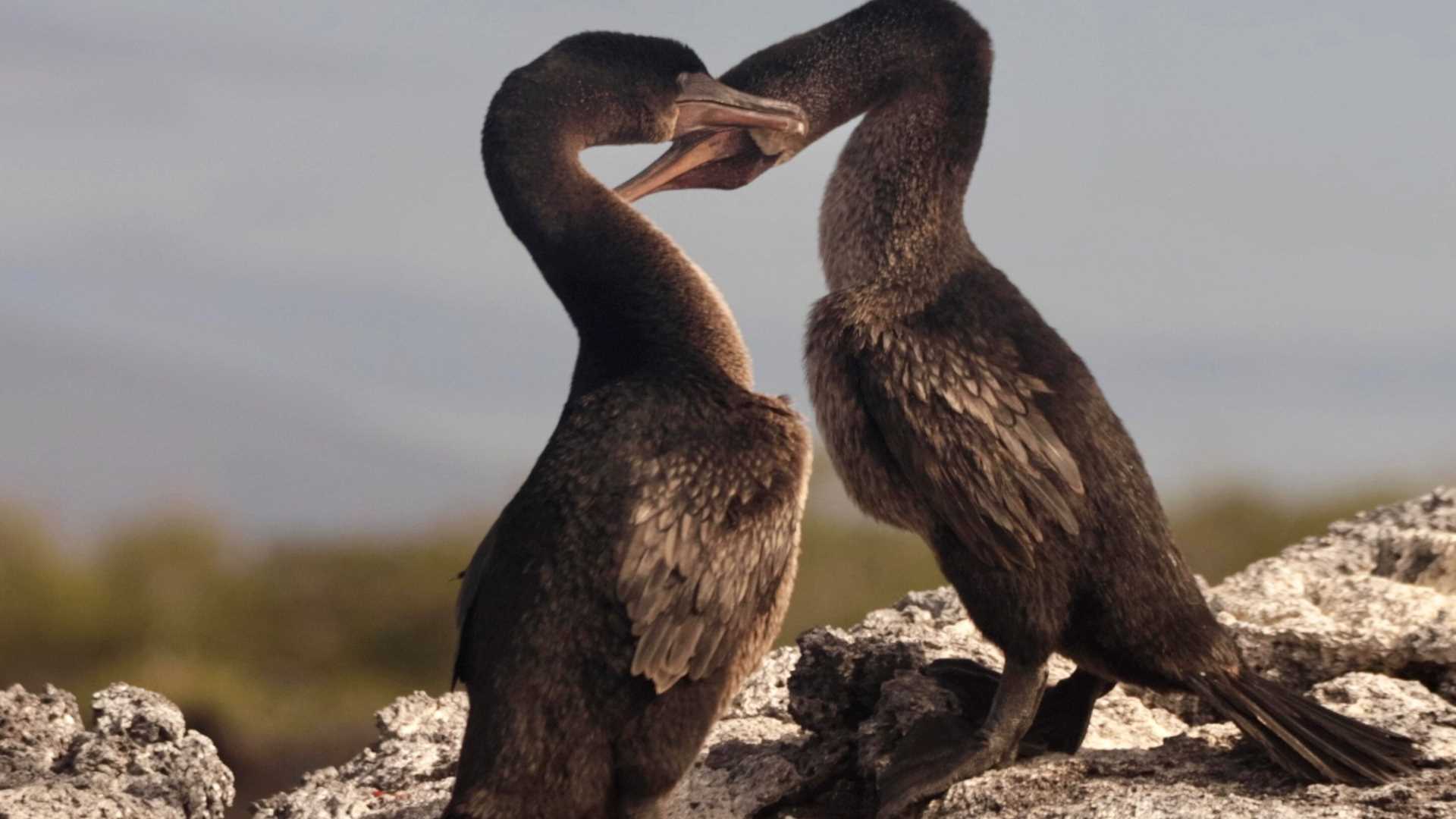Located in the western part of the archipelago, Isabela is the largest island in the Galápagos. It is known for its diverse wildlife and volcanic landscapes. This island has amazing visitors’ sites, including Urbina Bay and Tagus Cove.
We started off a great day in Urbina Bay, located on the western coast of Isabela Island. The area is known for its unique geological features and abundant wildlife. The bay was formed when an uplift event occurred in 1954, causing part of the ocean floor to rise above sea level. Our guests observed and learned about marine iguanas, sea turtles, land iguanas, penguins, and flightless cormorants.
The flightless cormorant and the Galapagos penguin are fascinating bird species endemic to the Galapagos Islands. Both are excellent examples of species that have adapted to their specific environments.
The flightless cormorant (Phalacrocorax harrisi) is a large, black bird found nowhere else in the world. They are the only cormorant species that have lost the ability to fly. Instead of relying on flight to hunt for food, these birds adapted to a marine lifestyle. Strong legs and webbed feet make them excellent swimmers and divers. Their wings have reduced in size and can no longer support flight. Flightless cormorants feed primarily on fish, eels, and other small marine organisms found in the cold, nutrient-rich waters around the Galapagos Islands.
The Galapagos penguin (Spheniscus mendiculus) is the only penguin species found in the Northern Hemisphere, and it is the second smallest penguin species in the world. These penguins have adapted to the warm climate of the Galapagos Islands by developing several unique characteristics. They have a smaller body size compared to other penguin species, which helps them dissipate heat more efficiently in the hot, tropical environment. Galapagos penguins have a denser feather coverage, which provides insulation against cold water temperatures when they swim and hunt for food. They feed primarily on small fish and marine invertebrates.
Both the flightless cormorant and the Galapagos penguin are considered endemic and endangered species. They face several threats, including habitat degradation, competition for resources, and the potential impact of climate change. Efforts are being made to protect their habitats and ensure their survival in the Galapagos Islands through conservation programs and strict regulations. These unique bird species serve as important indicators of the overall health of the Galapagos ecosystem.
In the afternoon, we prepared for water activities, Zodiac rides, and an invigorating hike.
What a great day we had in the Galapagos!
Photo caption and photographer: Flightless cormorants. Photo by Ivan Vasquez







